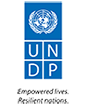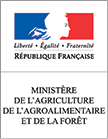We asked you to capture landscape connections with your lens. Here are the twenty photographs by professional and amateur photographers that the jury has selected for our exhibitions at the Global Landscapes Forum venue on the 5th and 6th of December and at a public space in Paris from 30th November to 20th December.
Niels Ackermann, Ketut Anaya and Michael Fuller are the photographers behind the three winning images of the 2015 competition.
See all entries to photo competition here.
The guardian of Palcacocha
By Niels Ackermann Checking for leaks, Lake Palcacocha, Cordillera Blanca, Peru. As the melting of glaciers increases the flow of water into the lake, these plastic pipes are the only way to prevent the city of Huaraz from being buried in mudslides. This kind of short-term adaptation can only go so far without strong actions to mitigate climate change.Woman at work
By Ketut Arnaya Harvesting rice, Bali, Indonesia. Women in Indonesia are responsible for many farming tasks, along with running their households. However, the rise of the tourism industry in Bali is changing the way the land is used and altering this traditional way of life.Finalists
Agriculture and deforestation
By Jonathan Guyot Swidden farming, Yucatán Peninsula, Mexico. These small temporary clearings release relatively little greenhouse gas and may even increase biodiversity – but only if they are left to return to forest, as rural communities have done for generations. Finding ways to include sustainable traditional practices into development planning is essential for the future.Any time playtime
By Puranjit Gangopadhyay Monsoon flooding, Kolkata, India. Seasonal flood waters have benefits, too. Each year they deposit tonnes of mineral-rich silt from the Himalayas along the Indo-Gangetic Plain. This fertile region, known as “India’s bread basket”, is home to half a billion people. As rains become more unpredictable, India must find ways to control severe flooding while being able to keep feeding the population.Apatani wet rice cultivation
By Sirsendu Gayen Traditional wet rice cultivation by the Apatani people, Arunachal Pradesh, India. This practice not only provides food and high income for rural communities, but can also restore soil fertility if farmers use crop residues and the villages’ organic waste.Apatani woman
By Sirsendu Gayen Rice harvest, Arunachal Pradesh, India. Although indigenous and local communities with clear and secure property rights are better able to conserve natural resources, many rural indigenous communities in India and other countries struggle to gain formal rights to their land.Beach no more
By Adeolu Adeniyi Closed beach, Lagos, Nigeria. Once a major tourist attraction, this beach was shut down due to wastewater overflow. However, with landscape change comes adaptation. Today, this is a hub for street vendors to sell their goods.Dry river sunrise
By Michael Fuller Kakadu National Park, Australia. The driest continent on Earth experiences wet and dry extremes, with rivers such as these overflowing during the wet season and dwindling to a mere trickle in dry months. As climate change exacerbates these extremes, Australia must find ways to regulate water flows.Let’s fly
By Sahat Aritonang Bathin Sembilan children, Jambi, Sumatra, Indonesia. Oil palm and pulp plantations are a major driver of deforestation on the island of Sumatra, which has lost 85% of its forests. But the local economy largely depends on these same activities, so the government and companies are seeking sustainable approaches.Livestock, main cause of deforestation
By Jonathan Guyot Cattle ranching, Yucatán Peninsula, Mexico. Land cleared to raise livestock quickly becomes unfit for agriculture, as overgrazing and trampling take away the soil nutrients and lead to rainwater run-off. Efforts are underway to manage the land in more sustainable ways – but agricultural subsidies and global markets that encourage commercial cattle and soya production pose a major challenge.Loksado Man
By Ricky Martin River crossing, Loksado, Kalimantan, Indonesia. The Loksado residents have found a way to share their culture with the world through ecotourism, which brings income to the community while protecting the environment.Meat on rice
By Michael Fuller Water buffalo, Sapa, Vietnam. Vietnam is the world’s second largest exporter of rice. But with recurring drought threatening the livelihoods and food security of millions, the country is searching for climate-compatible ways to produce the grain known as the ‘gift from God’.Misty haze
By Ricky Martin Dieng Plateau, Central Java, Indonesia. This volcanically active plateau was gripped with “potato fever” in the 1980s, with large areas of forest cleared to grow potatoes. But recent tree-planting activities aim to restore the region’s appeal to tourists, who are drawn to its mountain scenery and Hindu temples.Monsoon remix
By Joshua Nasielski Monsoon rains, Cambodia. Powerful and immense, the presence or absence of the monsoon rains dictates rural life in Cambodia. But as rains become more erratic because of climate change, smallholder farmers and their families must find ways to adapt.Shouting for a green world
By Supriya Biswas Children swimming, Canning, India. Fertilizers, sewage treatment plants, animal waste and septic systems can lead to the extreme growth of algae, which clogs rivers and streams. Policies to prevent this kind of pollution are needed to protect the livelihoods and health of local fishing communities and their environments.The effect of climate change
By Mohammad Rakibul Hasan Searching for firewood, Bangladesh. Communities along Bangladesh’s southwest coastline struggled to rebuild their lives after Cyclone Alia struck in May 2009. Disaster risk reduction policies that are integrated across all levels of government can help communities like these better prepare for, and recover from, such climate-related events.Traditional salt maker
By Ketut Arnaya Harvesting natural salt, Bali, Indonesia. Sea salt contains small amounts of essential minerals, which are good for human health. But trace amounts of heavy metals from polluted sea water are becoming more common, threatening this traditional livelihood.When nature strikes back
By Viktor Krizik Umbrella and garbage by the Danube River, Belgrade, Serbia. Europe’s second-longest river flows through 10 countries and 4 capital cities, and is the source of drinking water for 20 million people. In 1998, threats from overfishing, pollution and hydroelectric dams prompted 14 states to sign a convention that is taking an integrated approach to managing the whole river basin – and the landscapes within it.Yatara
Mukesh Khugsal Pilgrims en route to the Nanda Devi temple, Uttarakhand, India. Every 12 years, thousands of pilgrims make the 200-kilometer trek through grasslands, fields and glaciers to worship the Himalayan goddess Nanda Devi. Devotees consider the monsoon rains to be the tears of the goddess – just one example of how spirituality cannot be separated from nature for communities in this rural landscape.Tree of life
Photo by Jaya Setiawan Gulo
Old-growth coniferous trees still surround the Wallace Falls in Washington, although there is strong evidence of logging in the area, where old stumps have been left as a reminder of the pristine forest that once stood here.
Vote count: 4095
Mana: the last Indian village
Photo by Anurag Dhyani
Mana is the closest Indian village to the Tibetan border, in the high Himalayas. Its inhabitants, people from the Bhotia and Marchha ethno-linguistic groups, have adapted to the high altitudes, landslides and low temperatures over centuries.
Vote count: 1990
Confluence of world’s mighty mountains
Photo by Ikram Ur Rahman
Three mighty mountain ranges, home to endangered species such as the Himalayan Ibex and the Marco Polo sheep, meet 50 km away from Gilgit, in northern Pakistan. Gilgit’s strategic location attracts mountaineers, who usually begin their Himalaya Ranges or Karakoram expeditions here.
Vote count: 1780
Shortlist
Beach gone
Photo by Adeolu Adeniyi
In Lagos, Nigeria, a beach that used to be a major tourist attraction has been shut down due to several cases of wastewater overflow. Rather than being maintained and managed, it has gradually become a hub for street vendors.
Vote count: 1173
Landscape of Nanda Devi Biosphere Reserve
Photo by Deepak Dhyani
The Nanda Devi Biosphere Reserve in the Indian Himalayas is dominated by temperate coniferous forests, which are conserved by both upstream and downstream local communities. They implement land-use practices that bring food security while boosting the economy sustainably.
Vote count: 745
Man in the eye of an elephant
Photo by Brigitte Uttar Kornetzky
Wild elephants in the Nilgiri Mountains in India are losing their original territory. As they look for somewhere to settle, some of them suffer accidents while climbing steep and rocky hills, and others raid fields and ruin farmers’ crops.
Vote count: 669
Nor Yauyos Reserve
Photo by Héctor Cisneros Moncloa
The North Yauyos Reserve in Lima, is an important basin headwater for Peruvians. Lima is a city in the desert with over 10 million people. Today, while nearly one billion people don’t have access to clean water, Lima’s water consumption reaches over 170 liters /person/day. It is estimated that Lima will become the first big city to run out of freshwater.
Vote count: 714
Pucusana Fisherman
Photo by Héctor Cisneros Moncloa
A fisherman catches pejerrey with a net off the Peruvian coastline in Lima. Over 3/4 of our planet is covered by oceans, which contain over 80% of all the life on Earth. Millions worldwide who depend on fishing for their daily livelihoods are threatened by overfishing.
Vote count: 760
































































